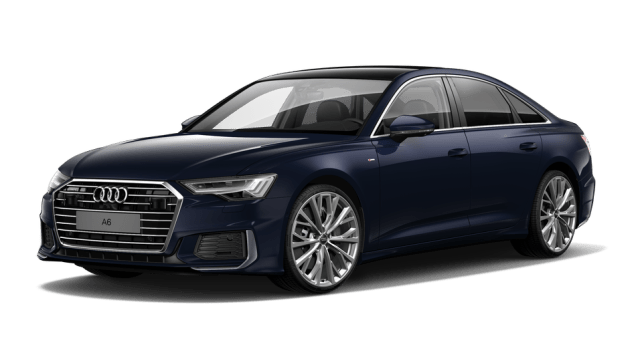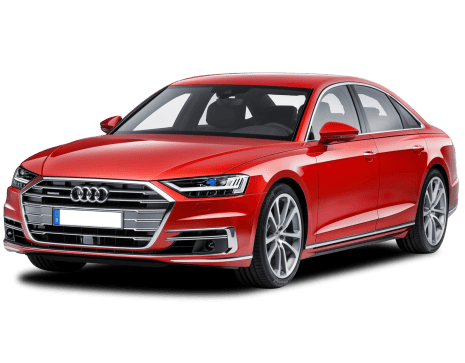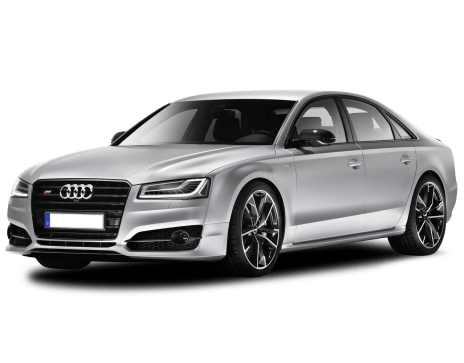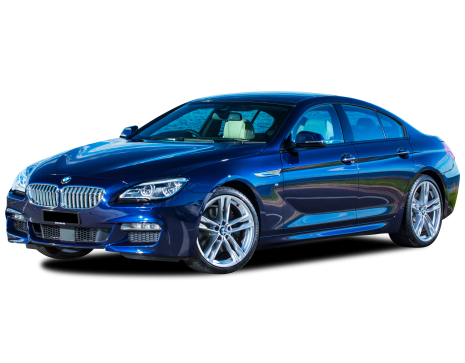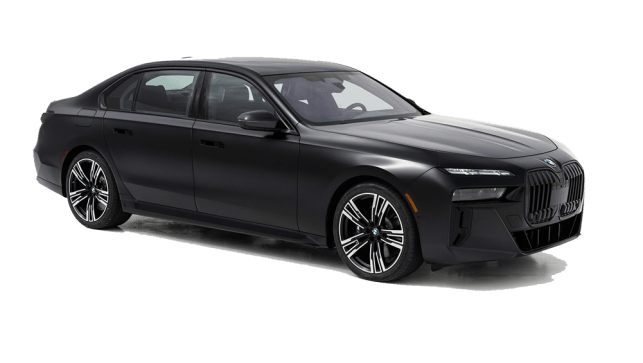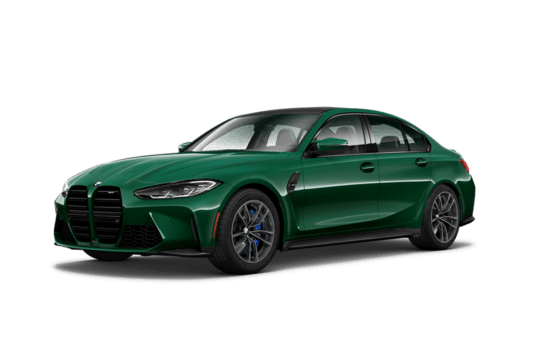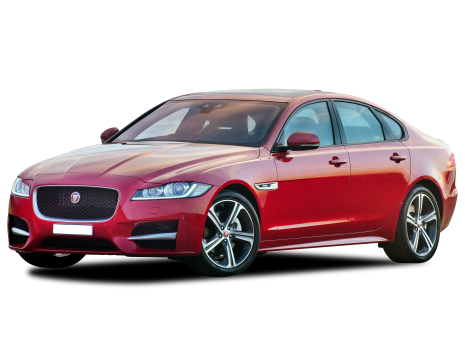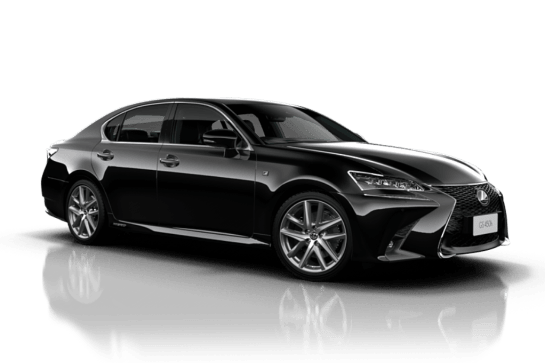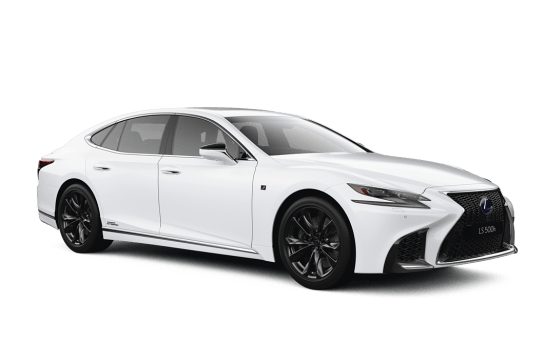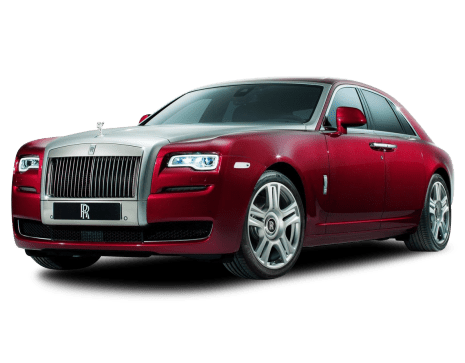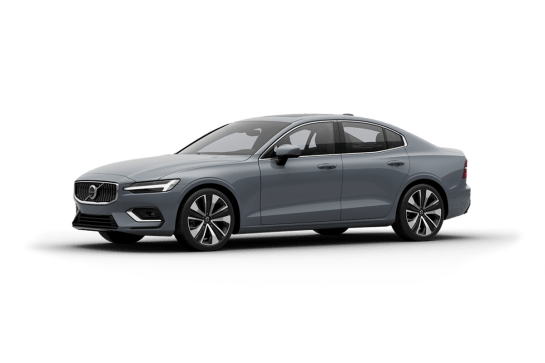
Maserati Quattroporte VS Alfa Romeo Giulia
Maserati Quattroporte
Likes
- Terrific powertrain
- Huge luxurious cabin
- Great looks and badge
Dislikes
- Iffy entertainment software
- Weird sensations through electric steering
- Some dodgy plastic chrome bits
Alfa Romeo Giulia
Likes
- It’s not German
- Improved in-cabin feel
- Better value than before
Dislikes
- Fiddly multimedia software
- Limited in-cabin storage solutions
- Only three-year warranty
Summary
Maserati Quattroporte
Maserati's Quattroporte is part of a dying breed. A decade or so ago, the European manufacturers took a huge amount of pride in their range-topping big luxury sedans, cars you can either drive or be driven in, bristling with the latest technology.
In 2015, all we hear about are the range-topping SUVs from those makers, with cars like the S-Class and 7 Series fading slowly into irrelevance.
While by no means low-tech, the Maserati Quattroporte takes the high style route, focussing on a luxurious interior with that handmade feel.
| Safety rating | |
|---|---|
| Engine Type | 3.0L turbo |
| Fuel Type | Premium Unleaded Petrol |
| Fuel Efficiency | 9.6L/100km |
| Seating | 5 seats |
Alfa Romeo Giulia
Alfa Romeo was poised to rock the established mid-size luxury sedan segment back in 2017 when it launched the Giulia, firing a direct salvo at the big Germans.
Combining drop-dead gorgeous looks with peppy performance was the name of the game for the Giulia, but after arriving with much hype and fanfare, Alfa Romeo doesn’t seem to have conquested as many sales as they had originally hoped.
So far this year, Alfa Romeo has sold just 142 Giulias, well behind the segment leading Mercedes C-Class, BMW 3 Series and Audi A4, but a new mid-life update hopes to revitalise interest in the Italian sedan.
The refreshed line-up brings in more standard equipment and sharper pricing, but has Alfa done enough to sway you out of a tried and trusted German sports sedan?
| Safety rating | |
|---|---|
| Engine Type | 2.9L turbo |
| Fuel Type | Premium Unleaded Petrol |
| Fuel Efficiency | 8.2L/100km |
| Seating | 5 seats |
Verdict
Maserati Quattroporte7.6/10
Beauty is way more than skin-deep in the Quattroporte and while the 330 doesn't have the punch of the S, it's hardly that much slower. Maserati reasons you will want to spend the $25,000 saved on options, concentrating on the Italian craftsmanship rather than the outright performance available in the V8 or the efficiency of the less aurally attractive diesel.
As with any car of this type, you've got to want one in the first place, but for a big, beautiful sedan, there's nothing as good looking this side of an Aston Rapide. The Quattroporte 330 does nothing to dim the allure of Modena's big mover and, if you're that way inclined, nobody on the outside will ever know.
For Quattroporte money would you stick with the Italian or be tempted by one of its German rivals? Let us know in the comments below.
Click here to see more 2016 Maserati Quattroporte pricing and spec info.
Alfa Romeo Giulia7.9/10
This is the Giulia Alfa Romeo should have launched back in 2017.
Especially stacked up against its German rivals, the new Giulia is not only more attractive to the eye, but also the hip pocket.
The boost in standard equipment and safety gear is a huge boon for potential Alfa buyers, while no compromises are found in the Giulia’s fun-to-drive nature and peppy engine.
Its weakest aspect might be its average three-year warranty, but if you are looking for a new premium mid-size sedan that stands out from the crowd without any major concessions, the Giulia should be on your watch list.
Design
Maserati Quattroporte8/10
Long, flowing lines mark out the Maserati as something quite different to its German, British and Japanese competition. This Quattroporte has increased in every dimension but the lines cover its size beautifully.
Big wheels, long wheelbase, low ride but it still looks like a sedan rather than pretending to be a coupe.
The elegance of the lines is complemented by a distinct lack of bling – there's little in the way of chrome work or shouty details. There's plenty satin finishes available and the beautiful paint, while available in pretty much any colour you like, is best kept to a restrained, deep hue. Or silver.
The cabin will doubtless age well. Classic shapes house a fairly conventional but hugely comfortable cabin. The front seats have heaps of adjustment and are large but supportive. Naturally, the leather is soft and supple.
The central screen isn't the dominant feature, like a 50-inch LCD screen in a small living room while buttons are kept to a minimum.
The rear seat is sensationally comfortable, with hectares of available space and a seat comfortable for either lounging or working.
Alfa Romeo Giulia9/10
Park a brand-new 2020 Giulia next to its predecessor, and you’ll find they look identical from the outside.
It would be a bit unfair to call this update a ‘facelift’, but we’re glad Alfa Romeo hasn’t messed with the sharp styling of its Giulia sedan.
Having been on sale in Australia since early 2017, the Giulia doesn’t look like it has aged a day. In fact, we reckon it has gotten a bit better with age, especially in its top-spec Quadrifoglio trim.
With a triangular front grille and the number plate offset to side, the Giulia looks unique relative to anything else on the road, and we appreciate its distinctive styling.
The angular headlights also add to the Giulia’s aggressive and sporty stance, even in its base Sport trim, while the 19-inch wheels help fill the arches and give a sense of a more expensive car.
The handsome look continues to the rear, with the sculpted derriere looking taught and tight like a well-tailored pair of suit pants rather than some ill-fitting, off-the-shelf trousers.
However, we will point out the black plastic on the underside of the bumper on our base Giulia Sport, which looks a tad cheap with only a single exhaust outlet on the left, and a sea of… nothing.
Stepping up to the more expensive (and more potent) Veloce or Quadrifoglio remedies this however, with a proper diffuser and dual and quad outlets respectively.
The Giulia certainly stands out amongst the sea of Mercedes, BMW and Audi models in the executive sedan segment, and proves that doing your own thing can be hugely satisfying.
Combine the stylish exterior with more colour options – like the new 'Visconti Green' – and you can really make your Giulia pop, though we do wish our test car was finished in a more exciting hue.
With this Vesuvio Grey option, the Giulia blends in a bit too closely to the greys, blacks, whites and silvers you usually see on premium mid-size sedans, but all colours aside from white and red attract a $1355 premium.
Inside, much of the interior carries over as before, but Alfa Romeo has moved things a little more upmarket thanks to a few small touches that add up to a big difference.
The centre console area, while not being redesigned, has been given more of a premium makeover thanks to a carbon-fibre-like trim with aluminium and gloss-black highlights.
The shifter, especially, feels great thanks to the dimpled leather design, while other touch points such as the multimedia control, drive select and volume knobs also deliver a weightier, more substantial sensation.
Aside from that, the Giulia retains its premium cabin materials, soft-touch multi-function leather steering wheel and mixed material finish for an elegant and sophisticated interior worthy of a premium European model.
Our test car was kitted out with the standard black interior, but more adventurous buyers can opt for tan or red – the latter of which would definitely be our pick.
Practicality
Alfa Romeo Giulia7/10
Measuring 4643mm long, 1860mm wide, 1436mm tall, and with a 2820mm wheelbase, the Giulia offers plenty of room for passengers, front and rear.
The sports front seats are an especially pleasant place to be; tight-hugging, well-bolstered and super supportive, meaning no fatigue even after extended driving trips.
Storage solutions though, are somewhat limited.
The door pockets won’t accommodate a bottle of any size thanks to the armrest design, while the two centre cupholders are positioned as such that a bottle will block climate controls.
A generous storage cubby can be found under the centre armrest though, and the wireless charger design lays your device almost vertically in a separate compartment so you won’t scratch your screen.
Glove box size is standard, but the owner’s manual does eat into room a little, while driver’s also have access to another small cubby to the right of the steering wheel.
At least Alfa now includes a handy key fob holder to the left of the shifter? Though this feature becomes redundant with keyless entry and push-button start meaning you more likely just to leave the keys in your pocket.
The rear seats offer plenty of head-, leg- and shoulder-space for passengers in the outboard seats, even when the front seat is set to my 183cm (6'0") frame, but the door pockets are, again, disappointingly small.
I fit adequately in the middle seat, but wouldn’t want to be there for any extended period of time due to the transmission tunnel eating into the footwell.
Rear passengers have access to a fold-down armrest with cupholders, dual air vents and a single USB port.
Opening the boot of the Giulia reveals enough space to swallow 480 litres, matching the 3 Series’ volume and outclassing the C-Class (425L) and A4 (460L).
This is enough for one large and one small suitcase, with a bit of room in the sides for smaller items, while four luggage tie-down points are located on the floor.
The boot also features latches to fold down the rear seats, but given they aren’t spring loaded, you still need to push them down with something long or walk around to the rear seats to flip them over.
Alfa Romeo has not revealed volume with the seats folded down, but we noticed the aperture into the cabin is noticeably narrow and quite shallow.
Price and features
Maserati Quattroporte7/10
The current Quattroporte has been with us now for a couple of years in diesel and petrol turbocharged V6s and turbo V8 forms.
The 330BHP uses the same, Ferrari-built V6 but detuned to 'just' 330 bhp. The price has been detuned too, dropping $25,000 from the V6 S's entry price to kick off at $210,000.
Maserati 330bhp benefits from an overall specification improvement across the range, landing in your garage with a ten-speaker stereo with USB and Bluetooth, power everything, dual-zone climate control, keyless entry and start, front and rear parking sensors with reversing camera, cruise control, sat-nav, auto headlights and wipers, double glazed windows and an interior covered in leather and wood.
Later in the year, your Quattroporte will be available with a new silk trim from Zegna
Only very occasionally does it become clear that Maserati is part of the Fiat Group and that moment comes when you use the 7.0-inch central screen in the dash.
The software is based on the group's UConnect and it isn't great. It's not bad, but it feels its age (however, it's much better than the system on the Gran Turismo), needing a lot more work or a quick surrender to Apple's CarPlay or Android Auto.
Once you work your way through the weird menus, it's fine to use and is miles ahead of the not-much-cheaper Lexus LS unit which is almost unusable.
Sound from the ten speaker stereo is crystal clear and the phone performance is also very good.
Alfa Romeo Giulia9/10
The 2020 Alfa Romeo Giulia has been trimmed down from four variants to just three, kicking off with the $63,950 Sport.
The mid-tier Veloce will set buyers back $71,450, while the top-spec Quadrifoglio is $138,950 – both of which have been reduced by $1450 and $6950, respectively.
Though the point-of-entry is higher than before, the newly introduced Sport grade is actually based on the old Super grade with the Veloce pack added in, actually saving buyers a bit of money compared to be before.
As such, privacy glass, red brake calipers, 19-inch alloy wheels, and sports seats and steering wheel are now standard across the range, and all items that you’d expect in a premium and sporty European sedan.
You'll also score heating for the front seats and steering wheel, which are you wouldn't normally see on any price-leading variant, making these features especially noticeable.
Also standard in the Sport is bi-xenon headlights, push-button start, dual-zone climate control, and aluminium pedals and dashboard elements.
Handling multimedia duties is an 8.8-inch screen, though this year the system gains touch functionality to make Android Auto and Apple CarPlay use a little more intuitive.
A wireless smartphone charger is also now standard across the line-up, which will stop your phone’s charge at 90 per cent as to not overheat/degrade your device’s battery.
As tested here, our Giulia Sport is priced at $68,260 thanks to the inclusion of the 'Lusso Pack' ($2955) and 'Vesuvio Grey' metallic paint ($1355).
The Lusso Pack adds active suspension, premium Harman Kardon sound system and interior ambient lighting, while a dual-pane panoramic sunroof can also be optioned for an extra $2255.
Overall, the Giulia is much better value than it was before thanks to its improved equipment levels, especially when stacked up against base versions of its rivals.
Under the bonnet
Maserati Quattroporte8/10
Like the S, the 330bhp is powered by Maserati's twin turbo 3.0 litre V6, made with more than a dash of Ferrari involvement. As the name suggests, it produces 243kW and a chunky 500Nm. With just under two tonnes to shift, the ubiquitous eight-speed ZF automatic transmission whisks the Quattroporte 100km/h in 5.6 seconds, only half a second down on the 301kW V6 S.
Maserati claims 9.1L/100km on the combined cycle (with the help of stop-start), which seems reasonable given our figure of 10.8L/100km, which we got a with a mix of city and highway running as well as a very enthusiastic blast through some secret back roads.
Alfa Romeo Giulia7/10
Powering the Alfa Romeo Giulia Sport is a 2.0-litre turbo-petrol engine tuned to deliver 147kW at 5000rpm and 330Nm from 1750rpm.
Mated to a ZF-sourced eight-speed automatic transmission and driving the rear wheels, the Alfa Romeo Giulia Sport is claimed to accelerate from 0-100km in 6.6 seconds, while top speed is capped at 230km/h.
Though those outputs might not seem like much in 2020, the driver-focused, rear-drive layout and brisk acceleration time are more than a match for its petrol-powered German counterparts.
Buyers wanting a bit more performance can also opt for the Veloce grade that takes the 2.0-litre engine to 206kW/400Nm, while the Quadrifoglio uses a 2.9-litre twin-turbo V6 good for 375kW/600Nm.
Efficiency
Alfa Romeo Giulia7/10
Officially, the Alfa Romeo Giulia will sip 6.0 litres per 100km on the combined cycle, but our weekend with the car yielded a much higher 9.4L/100km figure.
Test driving consisted of navigating the tight inner-city streets of Melbourne’s north, as well as a short blast up the freeway to find some twisty country B-roads, so your mileage may vary.
Worth noting the Giulia Sport sips Premium 95 RON petrol, making it a little more expensive to fill up at the bowser.
Driving
Maserati Quattroporte8/10
Just a few hundred metres behind the wheel is all it will take to convince you the Maserati belongs in the same class as the competition. It's incredibly quiet – courtesy of the acoustic double glazing – and all occupants benefit from supreme comfort.
While the 330 is 58kW down on the full fat V6, you won't really miss them. There's a fat torque curve, with all 500Nm available from 1750 to 5000rpm, meaning easy progress for the 5.2 metre sedan.
The Quattroporte has two sport buttons to choose from – one looks after the drivetrain and exhaust valving while the second stiffens up the Skyhook suspension.
With the first sport button pressed, you get a more lively throttle, sharper shifts and a glorious noise from the exhausts, although they are a long way from your ears.
It's still a fast car, with strong acceleration from standstill and in the gears, the power as linear as you like with no real turbo lag and a most un-turbo noise to go with the performance.
The only dynamic problem is the electric steering – it seems to get confused between your inputs and feedback from the road, the tyres feeling like they're 'nibbling' an uneven surface, tweaking the wheel in your hands.
The assistance is a little spotty, too, unexpectedly changing weight. It's just a bit weird. In normal driving, you'll never notice it.
Alfa Romeo Giulia8/10
Like all respected sports sedans, the Alfa Romeo Giulia features a front-engine, rear-drive layout to entice the those who would rather drive than be driven.
The exterior styling of the Giulia certainly promises a sharp, entertaining steer, while the interior touch points do nothing to take away from that potential.
Guide yourself into the snug bucket seat, wrap your hands around the wonderfully sized steering wheel and you will notice that Alfa has built the Giulia for the driver.
The steering wheel is an especially nice touch point and features oversized paddle shifters mounted on the steering column – not wheel – making it nearly impossible to miss a shift even when midway through a corner.
For those that like to use the shifter though, the up/down gear selection is arranged in the preferred back/forwards position respectively.
The adaptive dampers in our test car can also be stiffened up independently of the drive mode selected.
Speaking of which, three driving modes are on offer – 'Dynamic', 'Natural' and 'Advanced Efficiency' (DNA in Alfa-speak) – which change the feel of the car from hardcore to more eco-focused.
With suspension able to be changed on the fly, drivers can have the softest setting on for the bumpy, tram track-laden inner-city Melbourne streets, with the engine in full attack mode to get away from the lights for a cheeky overtake.
It's also a plus that the suspension can be changed from the press of a button on the centre console, instead of usually diving into a whole bunch of complicated menus to tweak and fine-tune certain elements.
Underpinning the Giulia is double wishbone front suspension and rear multi-link set-up, which helps keep things communicative and exciting from the driver’s seat.
Don’t get us wrong, you won’t be ripping drifts or breaking traction in the dry in a Giulia Sport, but the 147kW/330Nm engine offers enough pep to make driving fun.
Push hard into a corner and you will get tyre squeal, but luckily the steering feels sharp and direct, meaning its easy and fun to hunt for apexes even when keeping things under the posted speed limit.
The multimedia system in the Giulia is much improved with the touchscreen functionality to make Android Auto feel a bit more natural, but the 8.8-inch screen does look quite small when buried in the dashboard.
The rotary controller is also better, although the software is still a little fiddly and unintuitive to navigate from page to page, a bugbear likely remedied with more time in the car.
Safety
Maserati Quattroporte7/10
Six airbags, ABS, stability and traction controls, brake assist, blind spot monitoring and rear cross traffic alert.
There is no ANCAP or EuroNCAP safety rating for the Quattroporte.
Alfa Romeo Giulia9/10
Alfa Romeo’s Giulia sedan was awarded a maximum five-star safety rating from ANCAP in May 2018, with testing based on a left-hand-drive model from 2016 in Euro NCAP examinations.
In the adult occupant and child occupant protection tests, the Giulia scored 98 and 81 per cent respectively, dropping points for just ‘adequate’ chest protection of children in the frontal offset test.
As for pedestrian protection, the Giulia notched a 69 per cent score, while the safety assist assessment yielded a 60 per cent result.
However, since that test, Alfa Romeo has added lane-keep assist, adaptive cruise control, blind-spot monitoring and automatic high beam as standard, which were previously optional.
Also included at no extra cost on the 2020 Giulia is driver attention alert and traffic sign recognition, with autonomous emergency braking (AEB) with pedestrian detection, automatic headlights and wipers, hill-start assist, lane departure warning, tyre pressure monitoring, and a reversing camera with rear parking sensors carrying over.
According to ANCAP assessment, the Giulia’s AEB functions from 10km/h and works up to 80km/h to help drives mitigate an accident.
But the Giulia misses out on rear cross-traffic alert and an automatic emergency call function.
Ownership
Alfa Romeo Giulia7/10
Like all new Alfa Romeo vehicles, the Giulia comes with a three-year/150,000km warranty, matching the assurance period of BMW and Audi models, though the Germans offer unlimited mileage.
However, Alfa Romeo lags behind the premium industry leaders, Genesis and Mercedes-Benz, who both offer a five-year/unlimited kilometre warranty, while Lexus offers four-year/100,000km cover.
Service intervals on the Alfa Romeo Giulia Sport are every 12 months or 15,000km, whichever comes first.
The first service will set owners back $345, the second $645, the third $465, the fourth $1065 and the fifth $345, totalling $2865 for five years of ownership.


